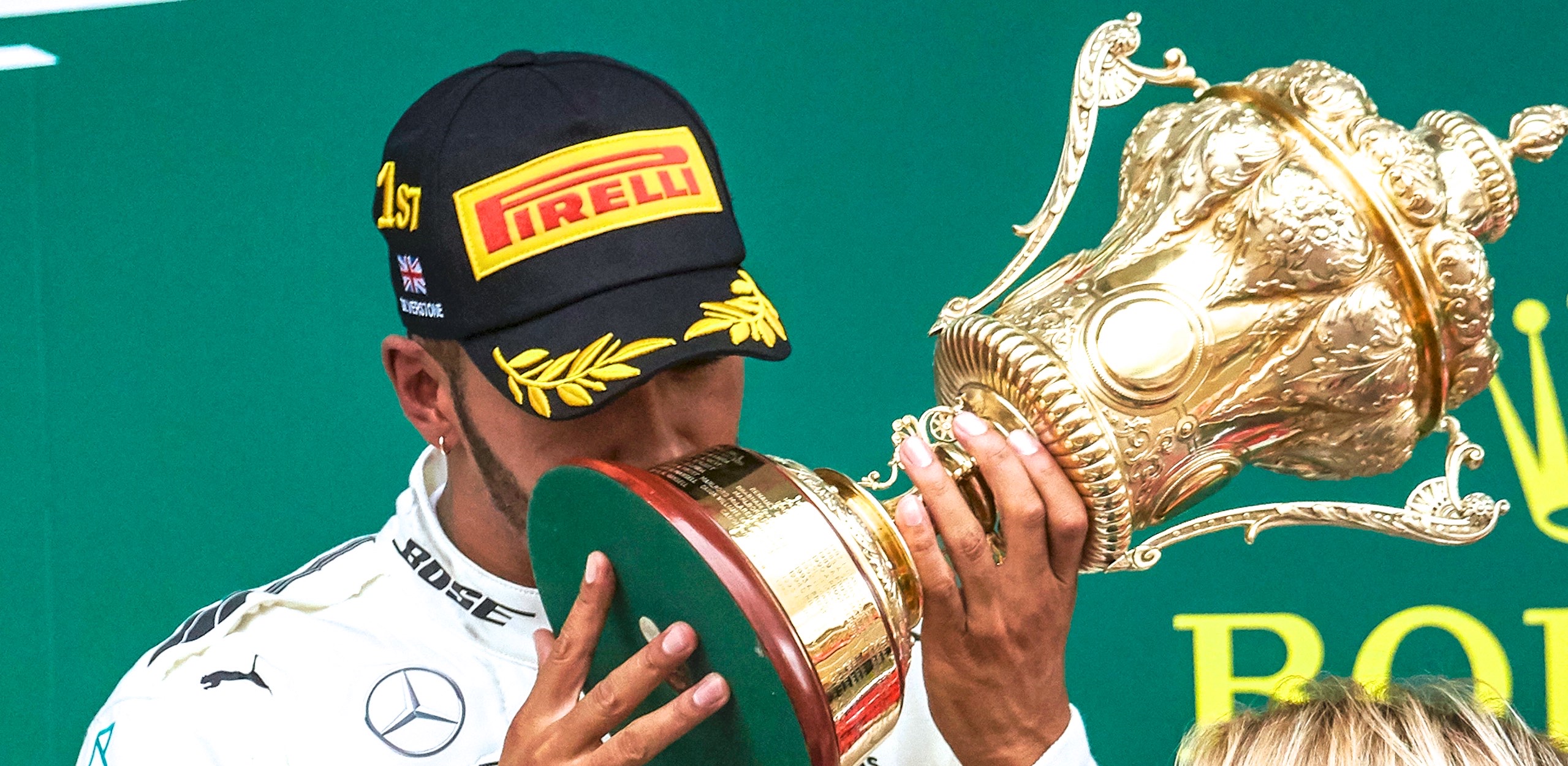
Lewis Hamilton was virtually untouchable at his home circuit, winning his fourth consecutive British Grand Prix while taking additional advantage of both his Ferrari challengers’ spectacular late race tyre failures to chop Sebastian Vettel’s championship lead to a mere point.
Hamilton’s lead was never challenged from lights to flag, crossing the line 14-seconds ahead of teammate Valtteri Bottas who had charged from his eighth starting position to make it a Mercedes double. Ferrari’s Kimi Raikkonen recovered from a violent left front tyre delamination just three laps from the finish to secure the third step on the podium. Sebastian Vettel was on his way to second when his left front suffered a similar catastrophic failure just one lap later. He would scrape his way around the circuit to pit and return, dropping down to seventh.
With the misadventures of the Ferrari duo, Max Verstappen looked to be on the podium, but Red Bull ordered him to pit to replace his tyres with an older set, lest he possibly suffer the same fate. He finished fourth.
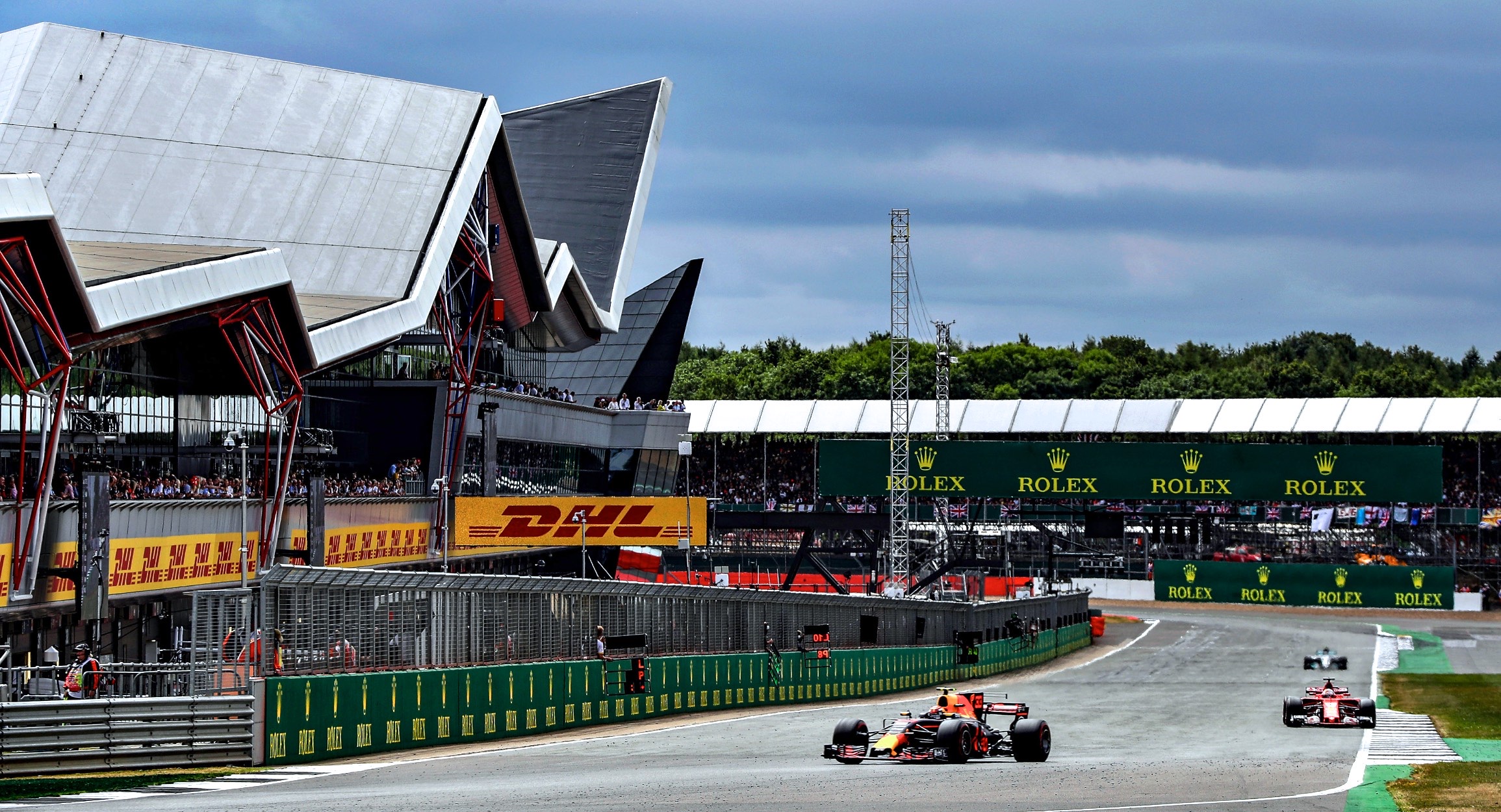
Silverstone is an extraordinary circuit. While it lacks the cache of Monaco and the amber nostalgia of Monza, in 1950 the historic Northamptonshire former WWII bomber base became the birthplace of modern F1.
Today because of that heritage, the UK has more than 140,000 employed in the business of racing. The knowledgeable crowds are above 100,000 and come for one thing: speed.
With an expected average speed of 150mph, and more ultra high-speed corners than anywhere else on the calendar, the teams approach Silverstone with a singular focus; they must keep the tyres happy on a high-speed mega lateral G arena. Everything else is secondary.
The challenge of Silverstone is its clockwise direction, with the majority of right-hand ultra-high speed corners that try to destroy an F1 car’s left front tyre in every bend, on every lap.
The F1 circus arrived at the toughest track of the season for tyre wear for a definitive test for the new era F1 car’s wider chassis, its lower and more substantial rear wings and wider tyres all round. Silverstone promised speeds not seen before, and F1 delivered.
However, no matter how fast the cars might be on single qualifying laps, the engineering challenge of keeping the tyres alive for 52 racing laps remains paramount.
The challenge of Silverstone is its clockwise direction, with the majority of right-hand ultra-high speed corners that try to destroy an F1 car’s left front tyre in every bend, on every lap. Starting with Copse’ flat-out 290 km/h 5g apex, followed by Abbey, Stowe, and the knife edge Maggots to Becketts sequence (turns 2 to 5), the new era chassis’ demand a forward mechanical balance with a stiff front end and softer rear end. The stiff front aides the driver’s steering input for a precise change of direction in both high and low-speed corners, while the softer rear end allows better grip under traction, such as exiting turns 9, 11 and 16.
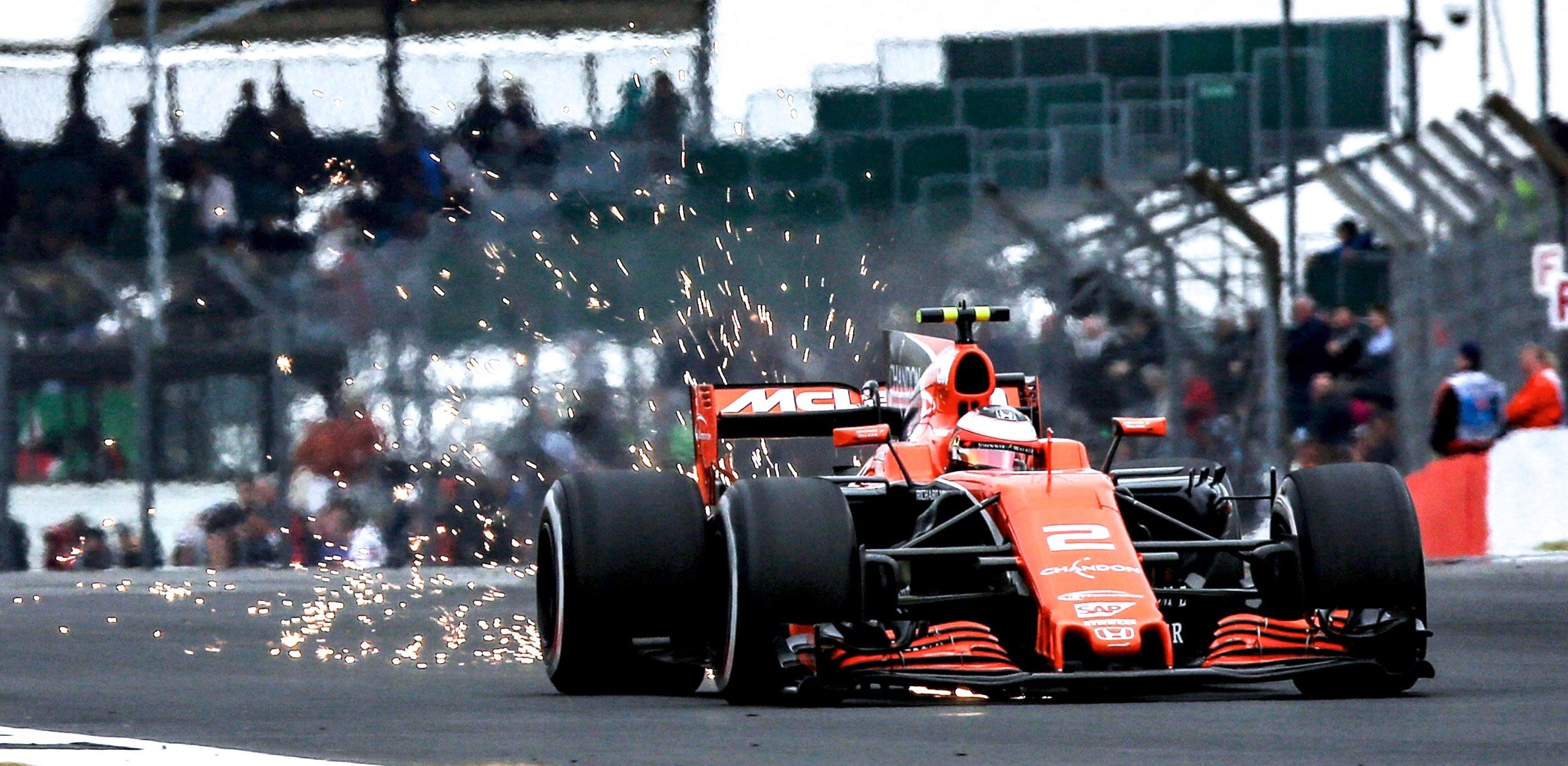
Along with the new generation cars lapping five seconds faster than 2016, Copse now generates 5.2 G instead of 4.7 last season. More than ever the key is to balance the front to rear roll couple. Race engineers set the rear wing angle for Silverstone’s highest speed and then adjust the front wing to push the tyres into the pavement without abusing them while balancing the overall downforce with the rear. Setting spring rates follow. Too stiff and the front tyres slide and destroy themselves; too soft and direction change suffers, with late steering inputs sliding the front tyres as well. The sweet spot is as little lateral movement as possible.
Engineers then account for ambient temperatures, the possibility of running in clean air and the reduction of weight on each of the car’s corners as the fuel is burned to make their final tweaks.
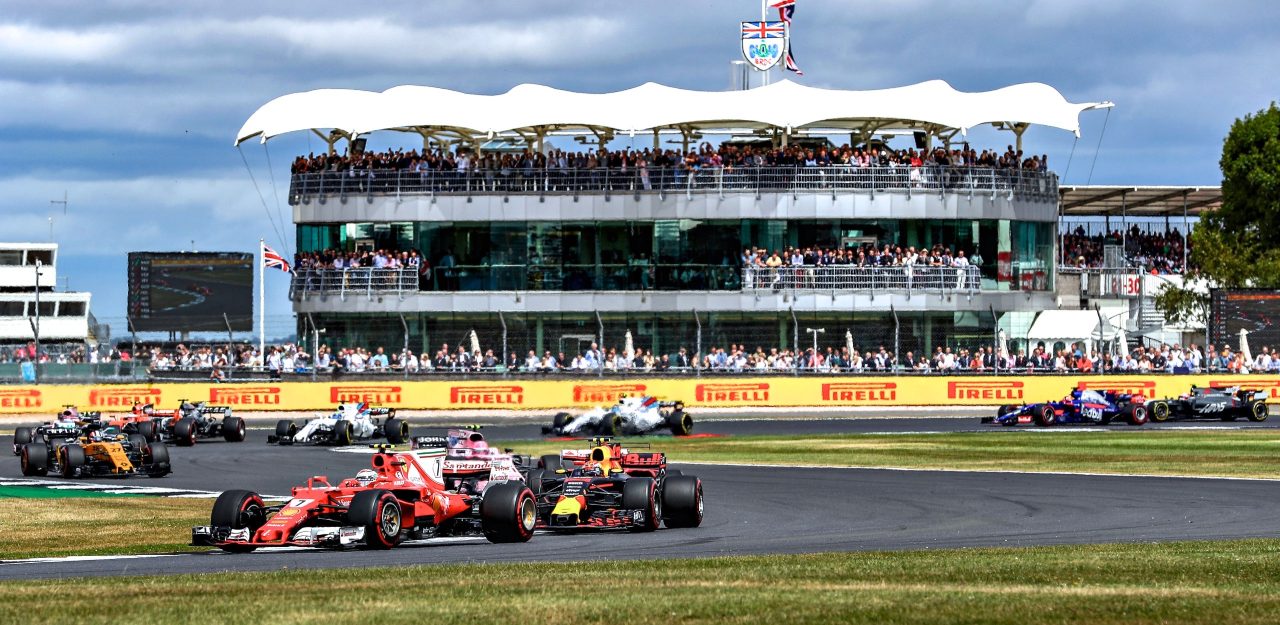
Setting up an F1 car for Silverstone then is a balancing act to learn the exact limits of wear (or sliding abuse) the new era tyres and compounds will tolerate before they give up… and how much warning they might provide.
During long practice runs, Mercedes could to turn into the fast corners and have the rear follow the front. Ferraris, on the other hand, were sliding their fronts first and then rotating. Could the Ferraris count on pushing their fronts for 52 laps and still stay with Hamilton and Bottas? How many tyre stops would it take to maintain position while keeping their tyres on the fast (and survival) side of the scale?
On Sunday afternoon, the last few laps the British Grand Prix would visibly demonstrate how important it was to know those answers.
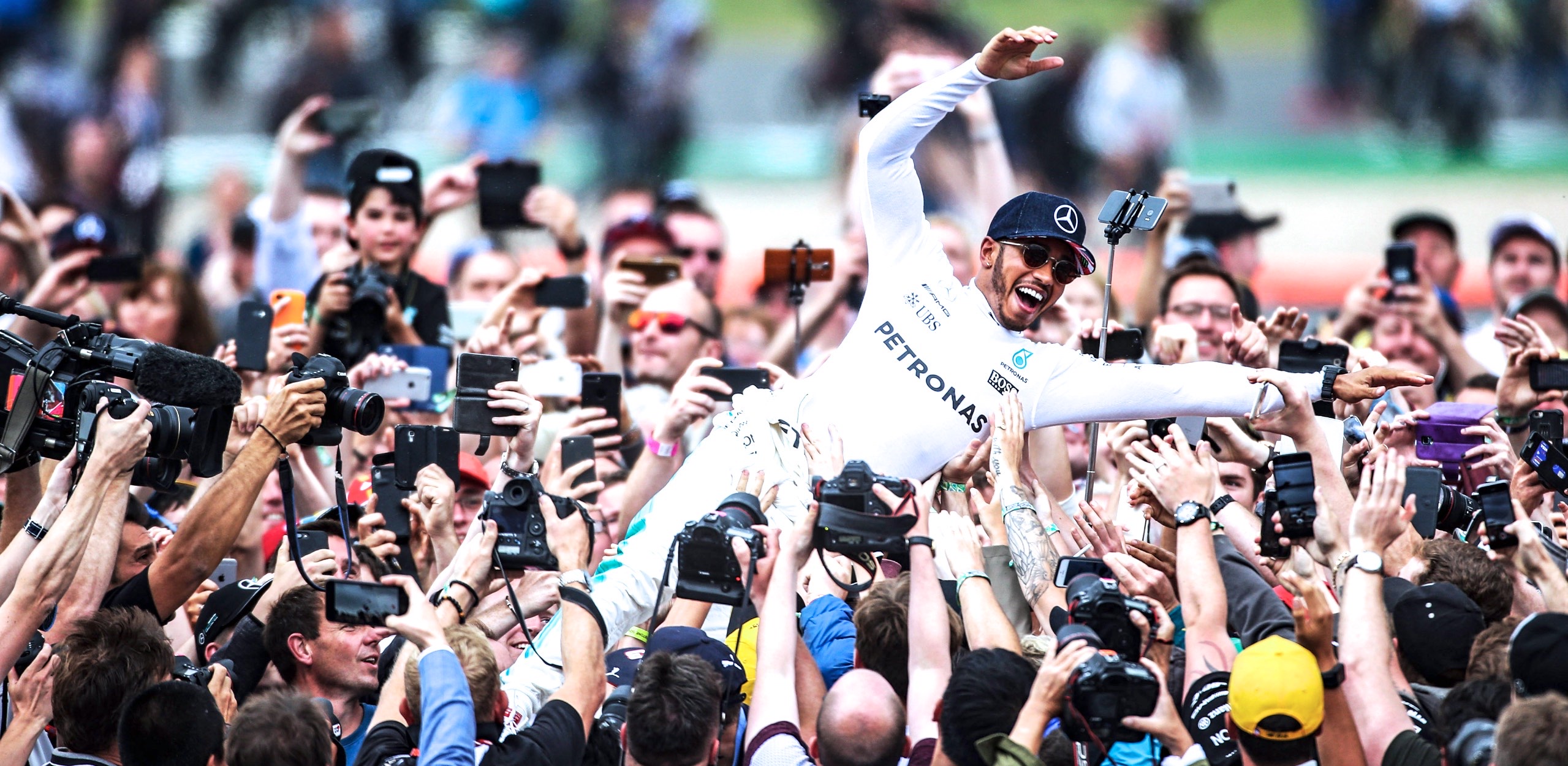
Despite Saturday’s wet/damp qualifying rounds, Lewis Hamilton was in a class of his own. He was 2-seconds faster than the previous fastest lap at Silverstone, and one half-second faster than anyone else. It was his 67th pole position, leaving him one short of Michael Schumacher’s record.
For everyone else, it was a real lottery as each driver slithered around Silverstone searching for the perfect lap.
Mercedes teammate Valtteri Bottas struggled with tyre temperatures on his Q3 out lap; with his 5-place penalty for a gearbox, he would start ninth. Ferrari’s Kimi Raikkonen would start in second, with teammate and championship leader Sebastian Vettel starting third. There were whispers of a chance the Ferrari duo could catch a strong start and put a pincer block on Hamilton.
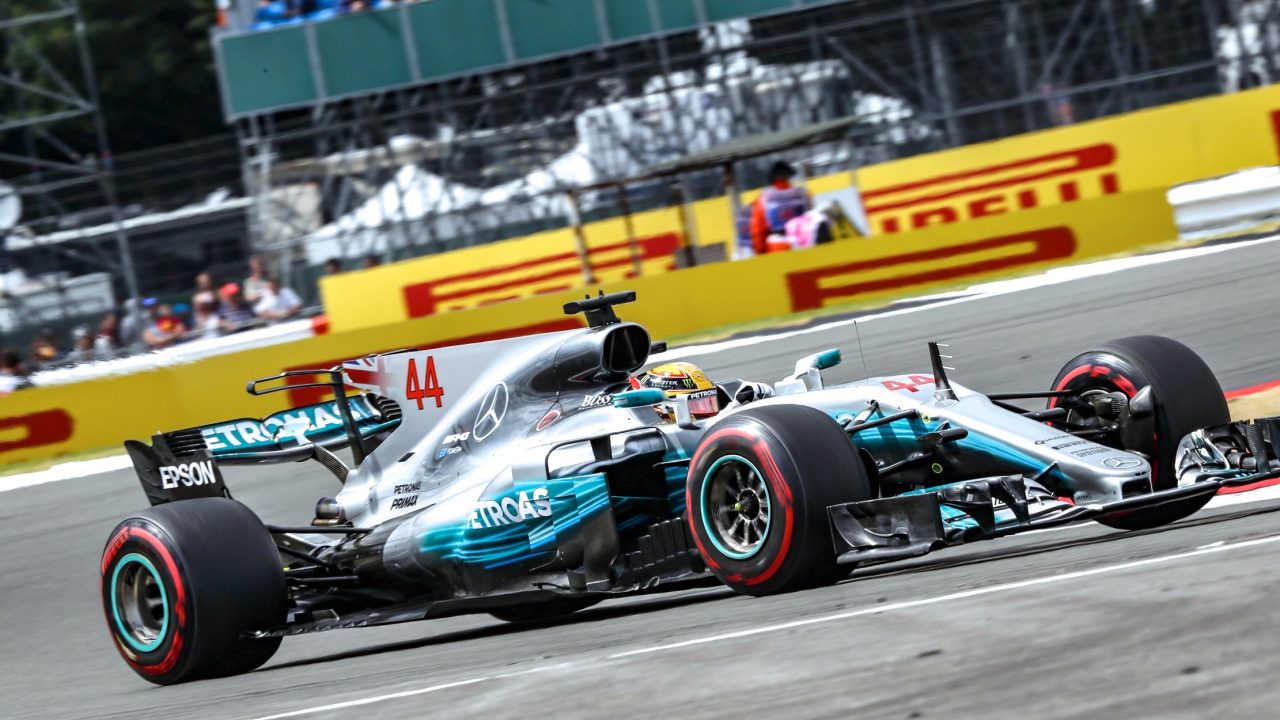
Waiting to take advantage of that possible carnage was Red Bull’s Max Verstappen in the fourth spot. Teammate Daniel Ricciardo’s power unit had failed in Q1; he would start on the back row, next to Fernando Alonso.
Alonso had rolled the dice with dry tyres and set P1 in Q1. Once more, the FIA had already handed him a 30-starting place demotion for a newly installed Honda engine after Austria. Some wags joked that 30-positions back would mean he would start from London’s Trafalgar Square.
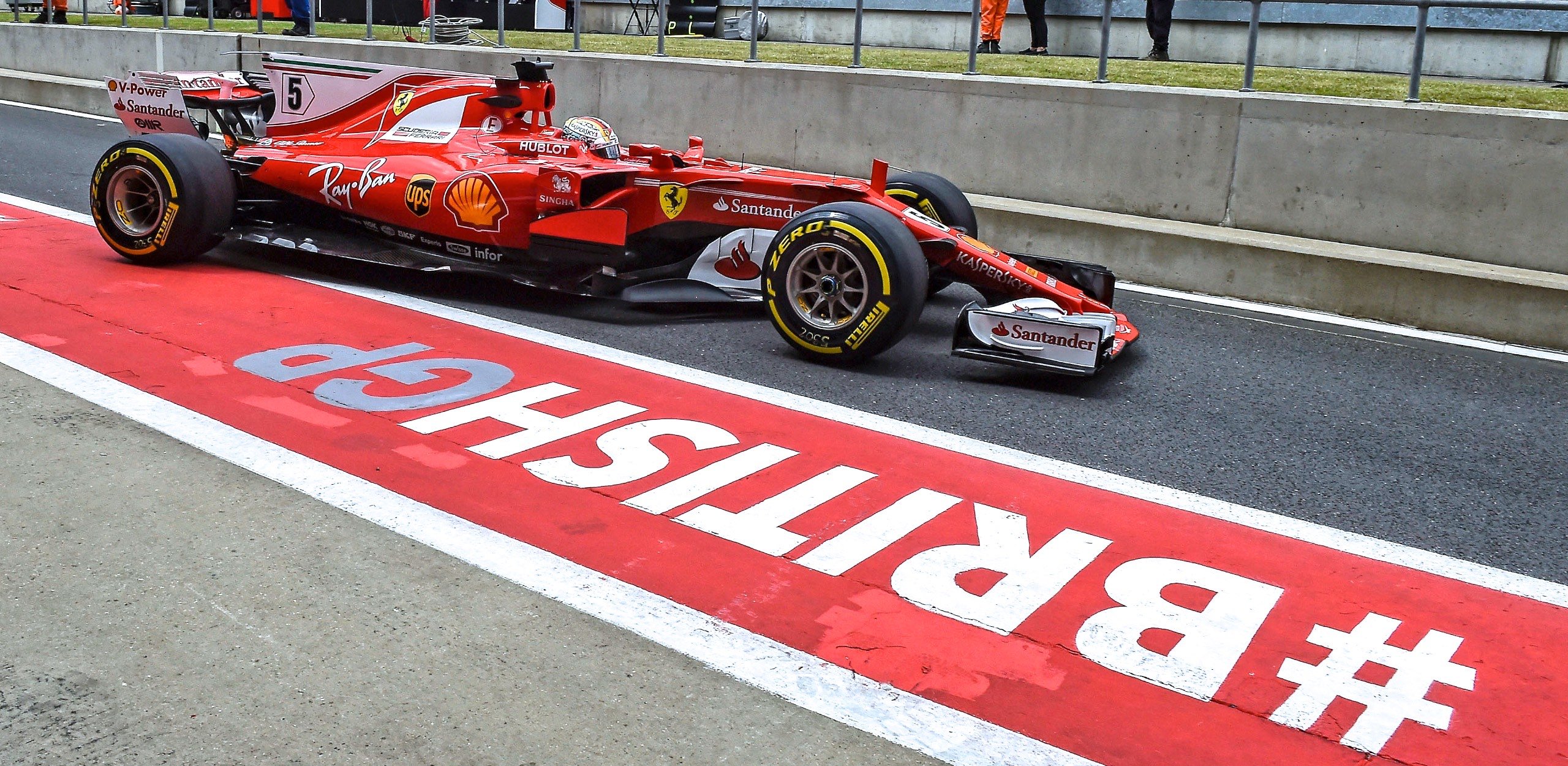
Jolyon Palmer’s Renault sputtered to a halt with hydraulic failure during the formation lap. That meant another lap and reformation, now with the possibility that with hot engines and brakes, each car could run into terminal overheating or clutch failure. Indeed, Vettel’s Ferrari engineers sent a message saying his rear brake drums were on fire as he sat waiting for the remaining cars to reform for the second time.
Hamilton leapt from his starting position to take the lead before going into Copse. Raikkonen swept away from Vettel as he bogged ominously off the line, but Vettel recovered to follow Raikkonen into Copse, only to find Verstappen slotting in behind Raikkonen. Vettel responded by taking back to spot momentarily before Verstappen decided he would have none of it and retook third by slicing across Vettel’s bow.
It all came to nought on Lap 3 when Toro Rosso’s Daniil Kyvat pulled that same type of manoeuvre on his team-mate Carlos Sainz Jr through Maggots and Becketts, but with hard contact. Sainz retired from the race on the spot with terminal damage. Kyvat lost his front wing but continued, and after a stewards review served a drive-through penalty that shuffled him down to 15th.
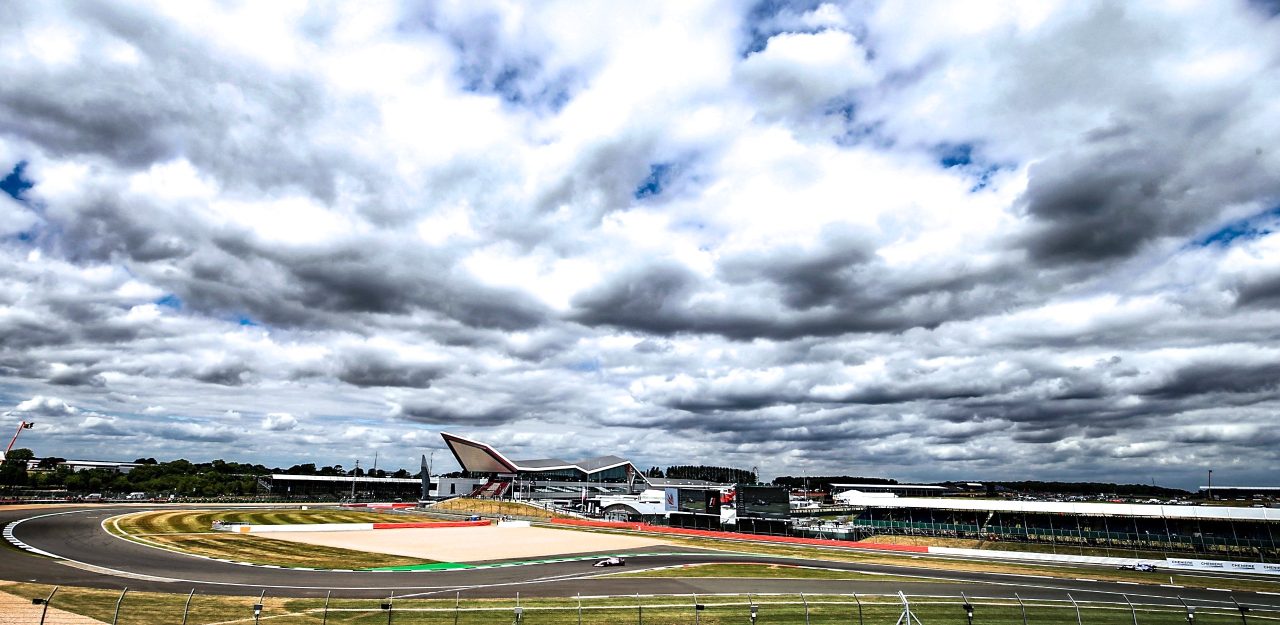
The restart saw Hamilton repeat his initial escape from the crowd. Behind, Raikkonen’s corner exits on slower corners were already showing signs of sliding fronts as he fought his SF70H to stay close to Hamilton. It also saw Vettel and Verstappen resume their wheel to wheel combat. The young Dutchman was keeping Vettel in check, even to the point of running wide off the course to protect his position.
Ferrari then made an undercut pit stop with Vettel on Lap 18, coming out ahead of Verstappen. Verstappen stopped for new tyres a lap later. From this point on Vettel and Verstappen were left to protect their supersoft tyres from blistering for the remaining 30+ laps.
Meanwhile, Bottas who had started on the harder soft tyre was moving through the pack from sixth. He passed Ocon’s Force India for fifth and Hulkenberg two laps later.
Mercedes then pitted Bottas on Lap 34 for supersofts to gain a tyre advantage on the now heavily understeering Verstappen. The Red Bull driver came in a lap later, but the damage was done; Bottas was now ahead and chasing down Vettel.
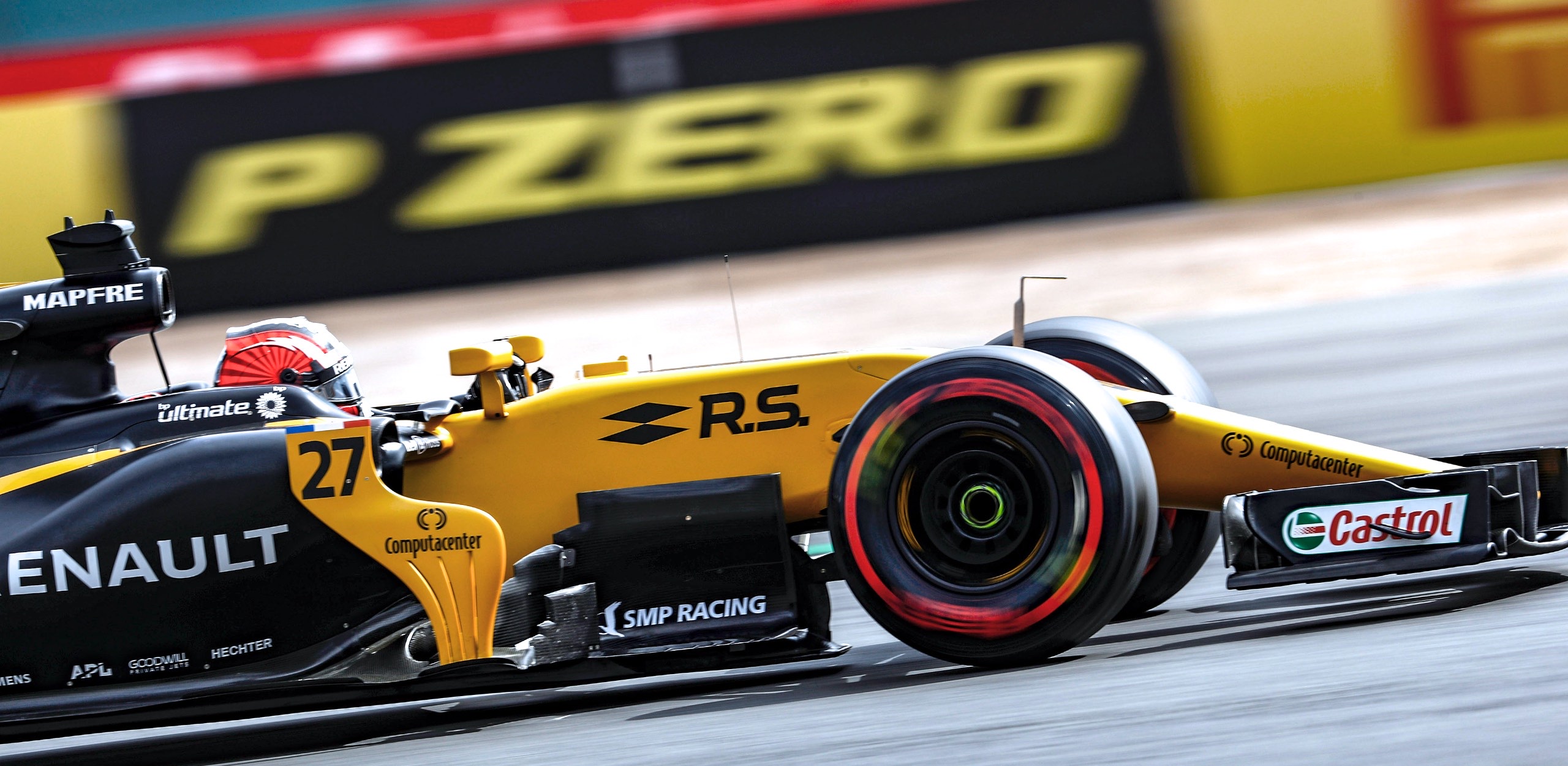
Ominously, Bottas’ better balanced Mercedes had helped the softer tyre last 32 laps.
With Hamilton comfortably out front after his only pit stop on Lap 25, Bottas was pushing to join him on the podium. He was pressuring Vettel and his worn fronts by Lap 43. Vettel rebuffed the move with late braking into Stowe, but locked his front brakes, thereby removing the last bit of usable tyre compound. Bottas made the pass stick next time around. With eight laps remaining, Bottas then set his sights on Raikkonen, in second place just ten seconds ahead. Neither Finn has much in the way of regard for each other, and Raikkonen manifested his displeasure by turning up his pace to protect his podium spot.
With three laps to go, Raikkonen’s left front tyre had taken all the abuse it could and violently delaminated; thankfully before he reached flat-out Copse. With the tread flapping against bodywork and suspension, Raikkonen somehow kept the right bits attached and made the pits, rejoining in third place where he would finish, 36 seconds back.
Any hope for a Ferrari 2-3 vanished with two laps to go when Vettel’s tortured left front finally gave up the ghost as well, rapidly deflating and shredding its carcas. Vettel’s now three-wheeled Ferrari pitched forward, slamming the chassis hard on the track in a shower of sparks. He would make it to the pits as well, but return in seventh place.
Hamilton and Bottas finished 1-2. Red Bull ordered Verstappen, in third place, to pit immediately for tyres rather than risk the Ferraris’ nightmare. Verstappen would finish fourth while teammate Ricciardo once again salvaged valuable points from the dismal scenario of starting last. Renault’s Hulkenberg was sixth, then Vettel, with Force India’s Ocon and Perez and William’s Felipe Massa capturing the final points.
Hamilton’s fourth consecutive British Grand Prix victory ties him with Jim Clark and Alain Prost. It was Mercedes’ 70th win making it fifth on the all-time list behind Ferrari.
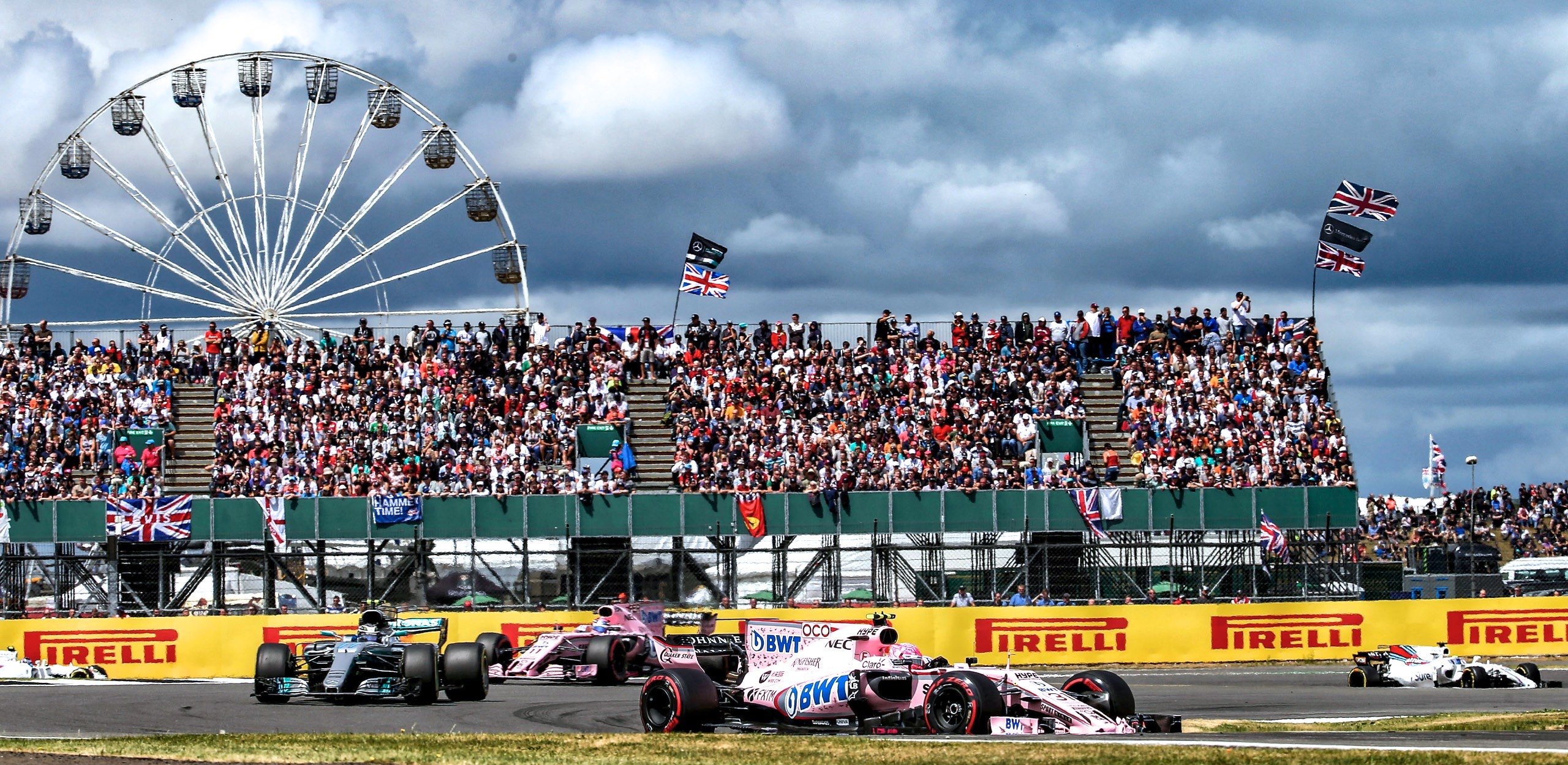
Pirelli’s initial analysis of both Ferrari’s tyres showed that Raikkonen and Vettel’s failures were caused by entirely different issues, but have a common thread. Both tyres were on the left front corners that were commonly sliding during the entire weekend. Whether it was due to lack of downforce, too stiff a roll couple, or changes in the balance of the car due to fuel load, a new era tyre that slides at 280 kph and 5g just isn’t going to last for 20+ laps.
For the second time in two weeks, Toro Rosso’s Daniil Kyvat once again pulled off a manoeuvre that cost the Red Bull organisation the loss of valuable constructor’s points. His taking out his team-mate Carlos Sainz Jr (and himself) through Maggots and Becketts is the worst mistake you can make and could be the last straw with Mr Marko.
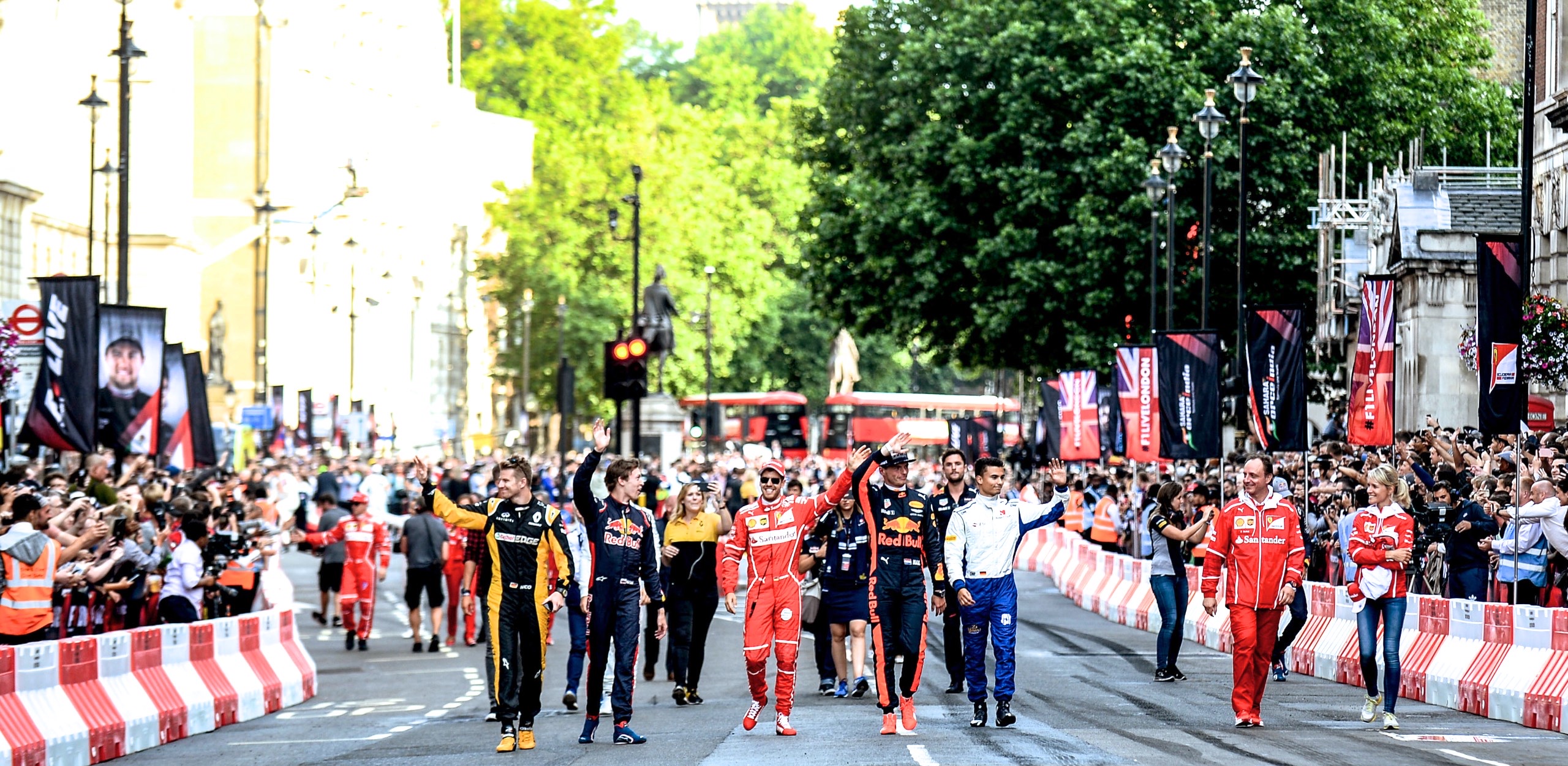
Over the last four season’s Mercedes reliability has been stunning. Running with near 0.99% finish rate is that mythical engineering level that aerospace and rocket science demand.
Liberty Media and its new F1 team keep putting new ideas front and centre. Their F1 Live London was a phenomenal boost for a sport that has languished promotion-wise for a decade. More than 100,000 strong showed up to be close to the stars of F1, the drivers and the machinery, and now many are talking about similar shows, even going so far as to suggest New York and Los Angeles. That is how to grow the sport. Now if they could just do something about more free live view…
Now its on to Hungary in two weeks. See you there.
